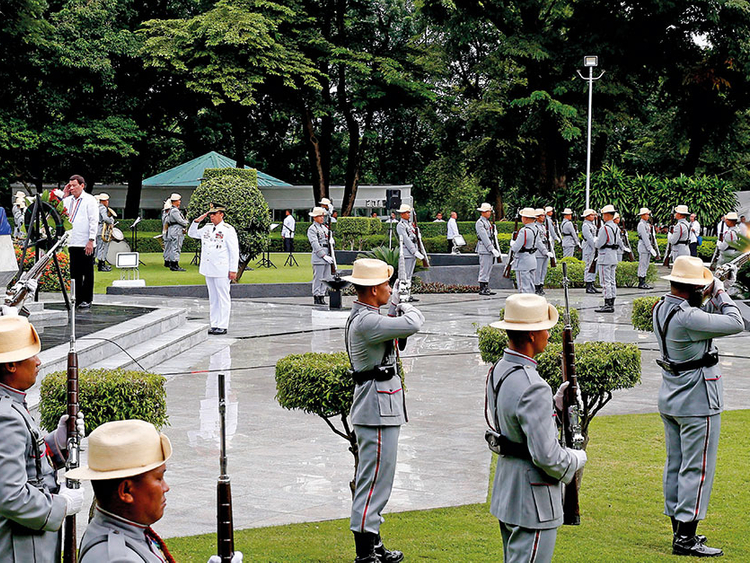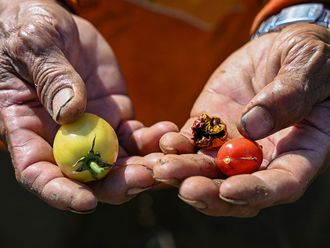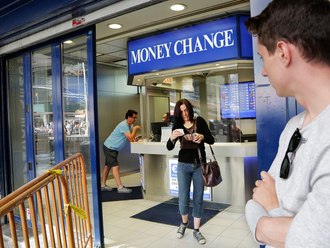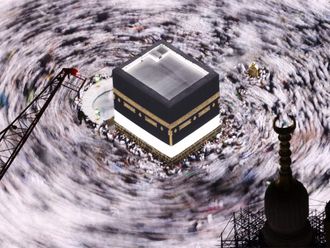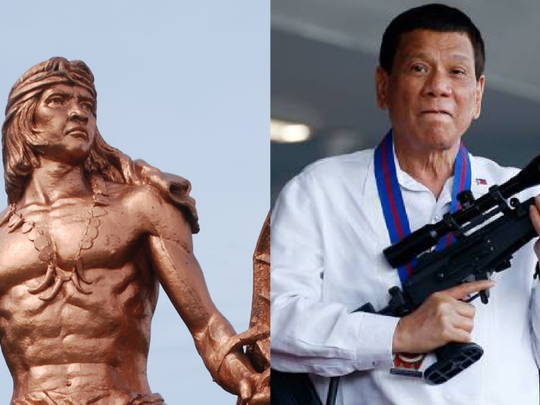
Manila: As the country marks the annual occasion to honour the nation’s martyrs, President Rodrigo Duterte called on Filipinos to evoke the contribution of a hero, those whose actions were seminal to the country’s nationhood — Lapu-Lapu.
In a speech he delivered at the National Heroes’ Cemetery in Taguig City on Monday, National Heroes Day, the President urged Filipinos to give the hero, Lapu-Lapu the rightful place he deserves for leading the country’s first armed opposition against foreign aggressors.
Duterte expressed that Lapu-Lapu had been seemingly relegated to the dustbin of history, “a footnote, just the — a vignette of life”.
A city on Mactan island, where the Mactan-Cebu International Airport is located, is also named after Lapu-Lapu.
“Lapu-Lapu was the first Filipino to kill a foreigner who invaded our country … (yet) history forgot him. He was the (Philippines’) first hero and designated a certain species of fish and called it “lapu-lapu” (grouper).
Who is Lapu-Lapu
Lapu-Lapu, who is also referred to in history books as “Cali Pulaco”, among other names, was the ruler of the kingdom of Mactan in what is now known as Cebu in Central Philippines.
Based on the accounts of Spanish chronicler Antonio Pigafetta, on April 27, 1521, Lapu-Lapu led his men in fighting a landing party headed by Portuguese explorer Ferdinand Magellan.
Magellan, a Portuguese explorer who organised the Spanish expedition to the East Indies from 1519 to 1522, sought to establish a foothold in the area to claim it for the Spanish crown.
But Lapu-Lapu and his men, wary of the foreigner’s true intentions, fought against the intruders and slew Magellan.
Survivors of his much reduced exploration flotilla managed to continue their journey, resulting in the first circumnavigation of the Earth, completed by Juan Sebastián Elcano.
At that time, there was no entity sharing a common nationhood such as the Philippines — only different tribes led by rulers of Malay origin.
After Magellan's failed mission to colonise the islands, it took the Spanish crown 44 more years before it could set foot again in the Philippines.
Colony for 300+ years
The Philippines was a subject to colonial Spain for more than 300 years.
Duterte said while Lapu-Lapu occupies a big place in the country’s history, he was only provided with a statue that is even smaller than that of Magellan.
“And not to dishonour the memory of Magellan. He was the so to speak, the first person who discovered our country”, he said, while also adding that the Malays of the island already have a civilisation even before the arrival of the Spanish colonisers.
“We, along with the Indonesians and Malaysians, Brunei and everybody here, we belong to the Malay race and we have had our own civilisation thriving before the Dutch invaded Indonesia; the British, Malaysia; and the Philippines, the Spaniards and the Americans,” he said.
“Today, we honour not just those heroes whose statues proudly stand along hallways and pedestals, or whose portraits are embedded in our currency and history books. Instead, we honour our unnamed heroes who, in their own little ways, have made huge difference in the lives of those they have touched,” he said.
“We honour our brave troops ... We honour our educators who, despite limited resources, have made it possible for our youth to learn and understand what it takes to become heroes in their own right by contributing to our efforts in nation-building.
"We honour our overseas Filipino workers who, while enduring the hardships of working away from their homeland, have contributed to our national development while providing the needs of their loved ones,” he said.
Who is Magellan
Born into a Portuguese noble family in around 1480, Magellan became a skilled sailor and naval officer and was eventually selected by King Charles I of Spain to search for a westward route to the Maluku Islands (the "Spice Islands").
Commanding a fleet of five vessels, he headed south through the Atlantic Ocean to Patagonia, passing through the "Strait of Magellan" into a body of water he named the "peaceful sea" (the modern Pacific Ocean).
Despite a series of storms and mutinies, the expedition reached the Spice Islands in 1521 and returned home via the Indian Ocean to complete the first circuit of the globe.
Magellan did not complete the entire voyage, as he was killed during the Battle of Mactan in the Philippines in 1521. His gift, the Santo Niño de Cebu (Child Jesus of Cebu) image remains one of his legacies during his arrival.


